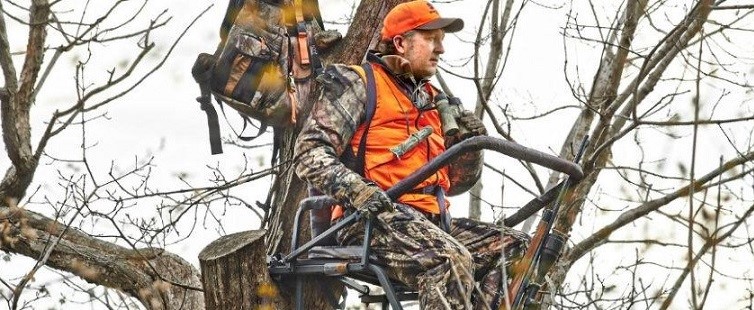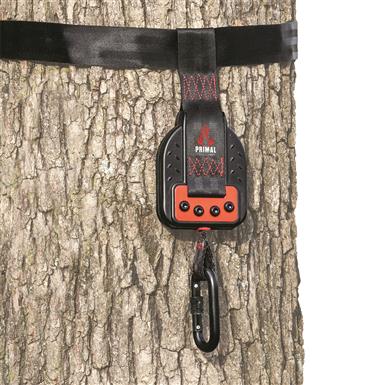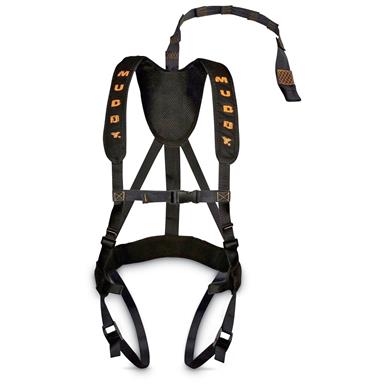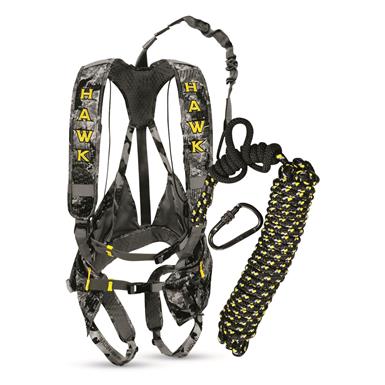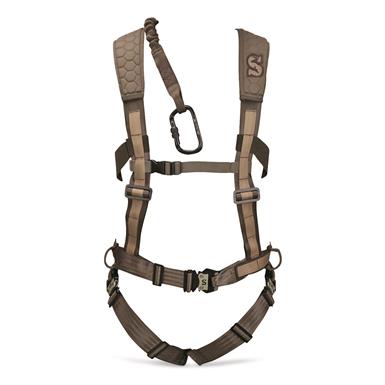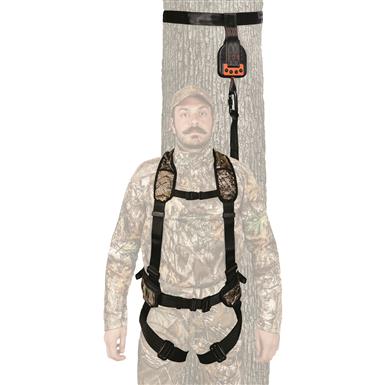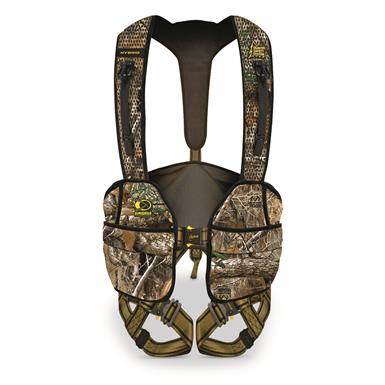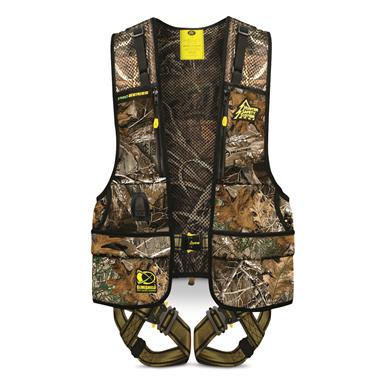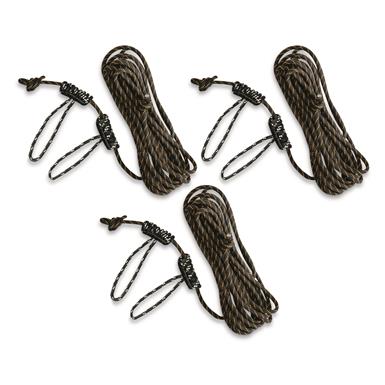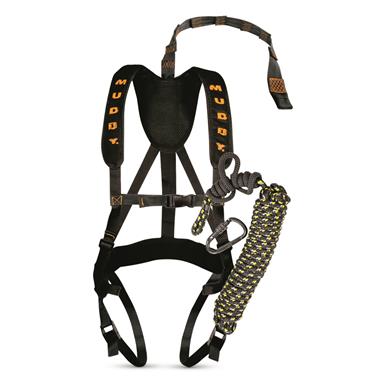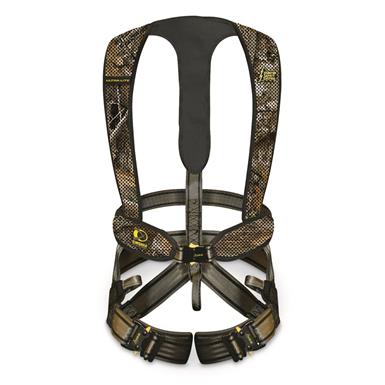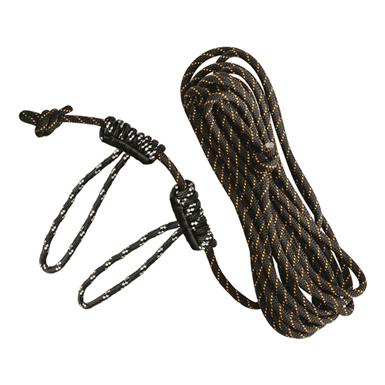Practice Pays
I have a fixed-position stand hanging over my yard so that I can practice shooting at targets. Yes, it's hot in the summer and yes, it feels like overkill when I put my body harness on over my T-shirt and shorts and then inch its tail over the step sections. The first time bordered on ridiculous. But it is now ridiculously easy.
Belts versus chest harnesses or full-body harness? "I've used both extensively, and now favor a harness over a belt," James said." I know several bowhunters who have been injured by belts bruised midsections, broken ribs when they fell." If you use a belt, wear it cinched tightly just below your arms, rather than around your waist.
Don't forego using a chest or body harness because you feel they take too much fumbling in the dark, or that there are too many straps interfering with movement. Use the type with the lanyard accessible high on the shoulders, and put the harness on under your outer layer of clothes before heading out. Still, in the tree, keep your tether short.
We also can lessen the climbing and descending dangers by warming up first, and making sure our hands are free. Just being aware that this is a dangerous part of the process helps. Plus, we can easily take steps to lessen the danger of that move from steps to the tree.
Extra Tails
You can buy extra ends of safety belts or harnesses and leave them attached to the tree above your stand. There is still a critical moment when you must unhook and re-hook, but that movement is a lot safer if it doesn't involve wrapping the tail of the safety belt around the tree first. "I attach my safety line before stepping in and don't take it off until I step out," said Dave Samuel. "If the safety line won't reach for me to step off the stand when I depart, then I re-attach it to something else or even the stand itself."
Example B - Be Aware Of Conditions And Adapt
Ray Miller, a registered Maine guide, runs a bear and deer hunting business just a dozen miles from the Quebec border. He knows that as early as October, he can expect snow and freezing rain. "Safety belts are installed when we put up the tree stand and left there for clients," Miller said. "We also put non-skid material on the steps and platform."
Choosing the right type of tree also is very important. "Smooth-barked trees, such as maple and aspen, are terrible choices for those using climbing stands," according to Fred Gaumnitz of API. "Many people go in and choose a tree in the dark, which is not wise," Gaumnitz said. "Whether you're using a climber or a fixed stand, you have to be extra careful when there's moisture, or freezing conditions."
Extra Steps Eliminate Mis-Steps
We've all read and heard all the talk about tree stand safety. We've all heard all the talk about seat belt safety while driving, too, although we sometimes don't use them because we're just running to the store, or they're too uncomfortable. "People neglect to wear their safety harness because they don't think they're going to fall in that period of time," Gaumnitz said. "Whether it's while they're using steps or hanging a stand." Gaumnitz was unpleasantly surprised while giving a tree stand seminar in Corinth, MS last year. "There were 500 people at the seminar, and when I asked how many had fallen out of a tree, about 100 held up their hands," Gaumnitz recalled. "Thirty-seven of them were in wheelchairs."
That informal survey mirrors the figures from the Deer & Deer Hunting surveys. And in both cases, remember: Only the survivors have contributed those numbers.



